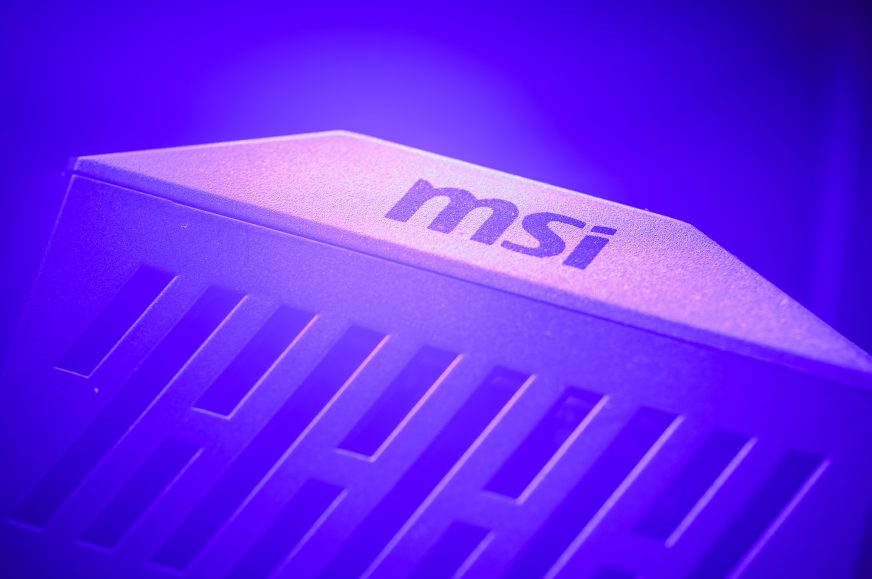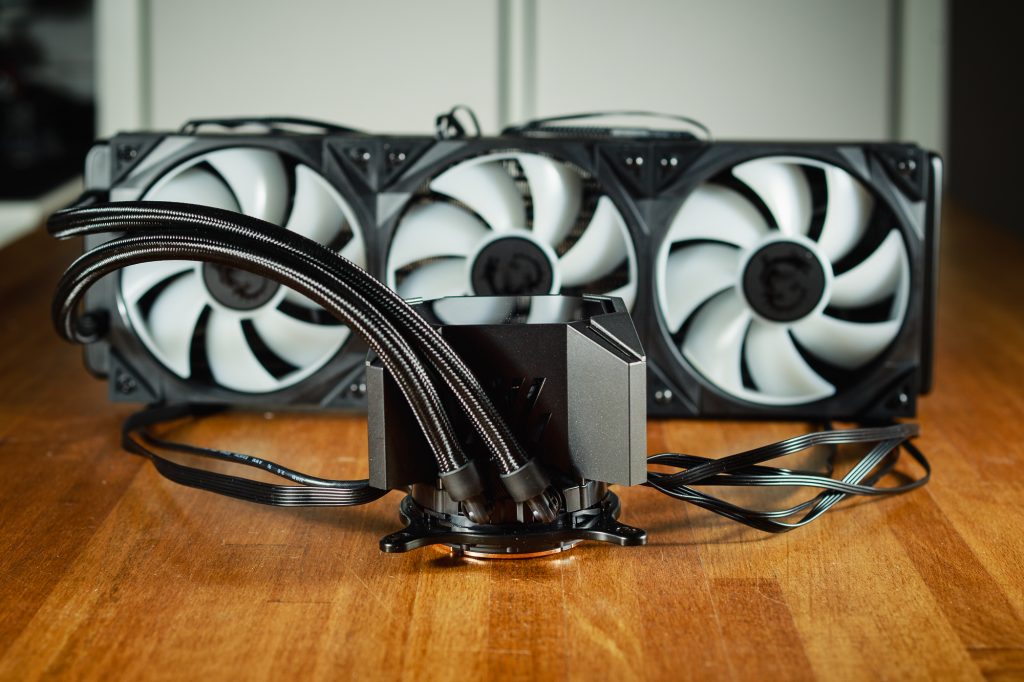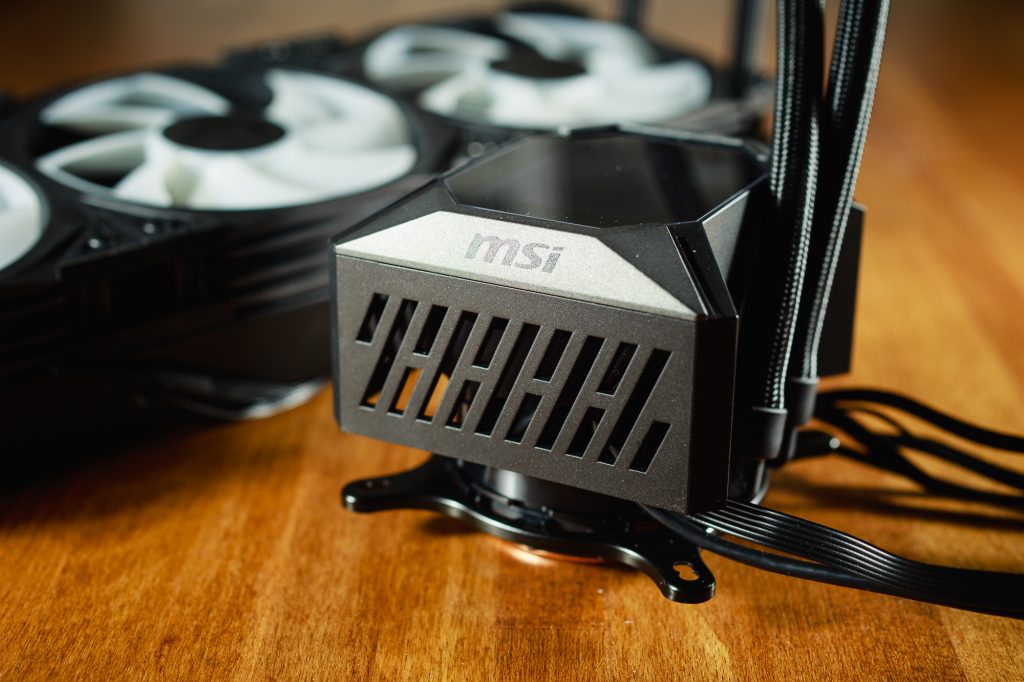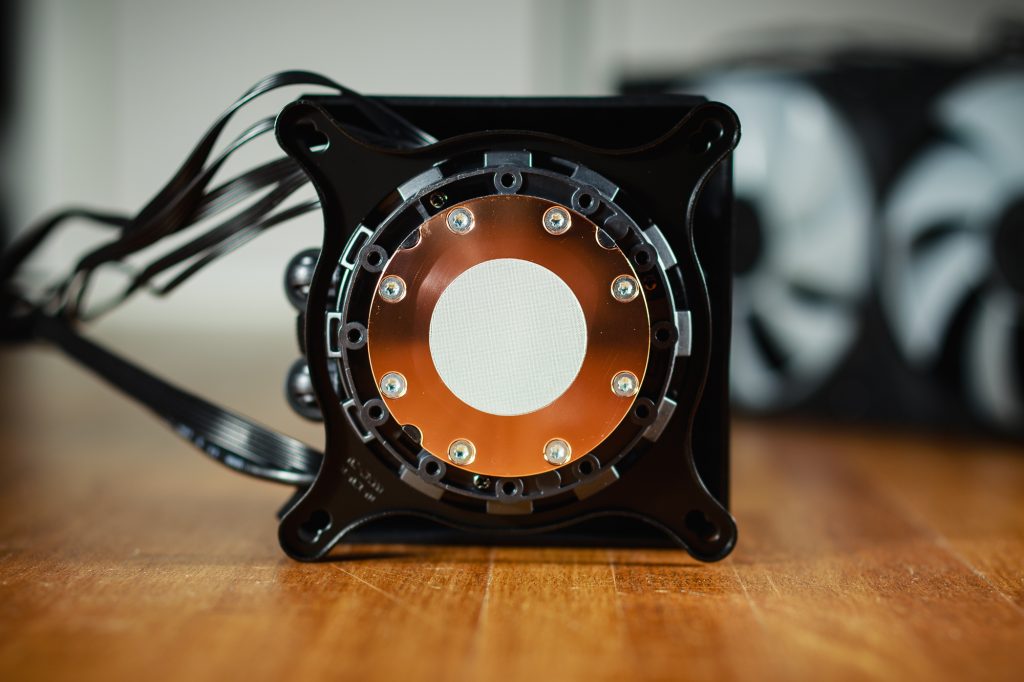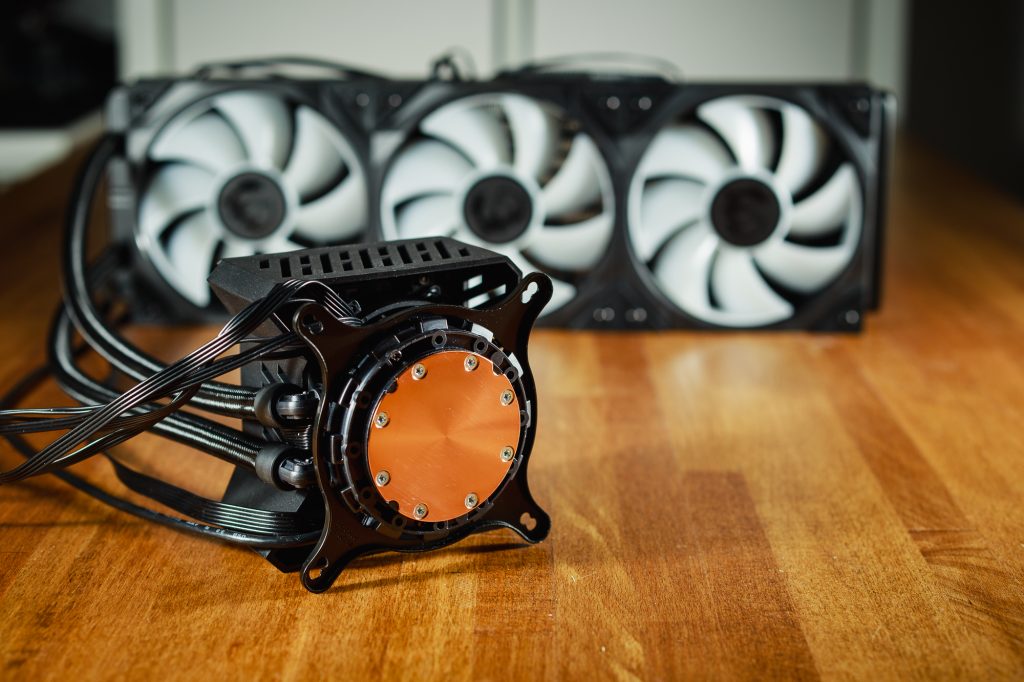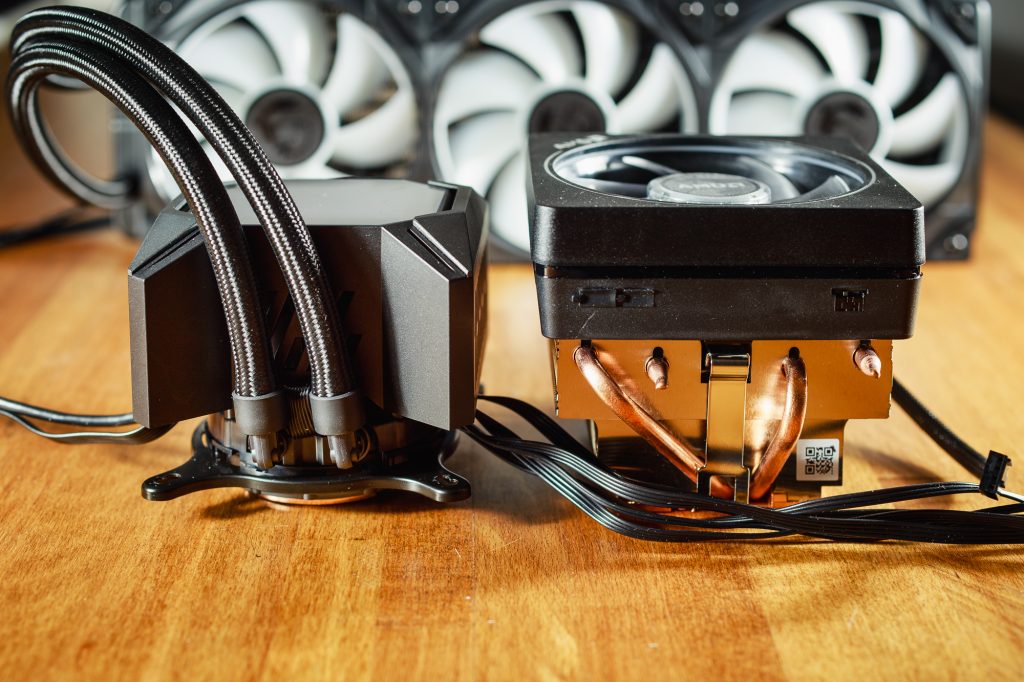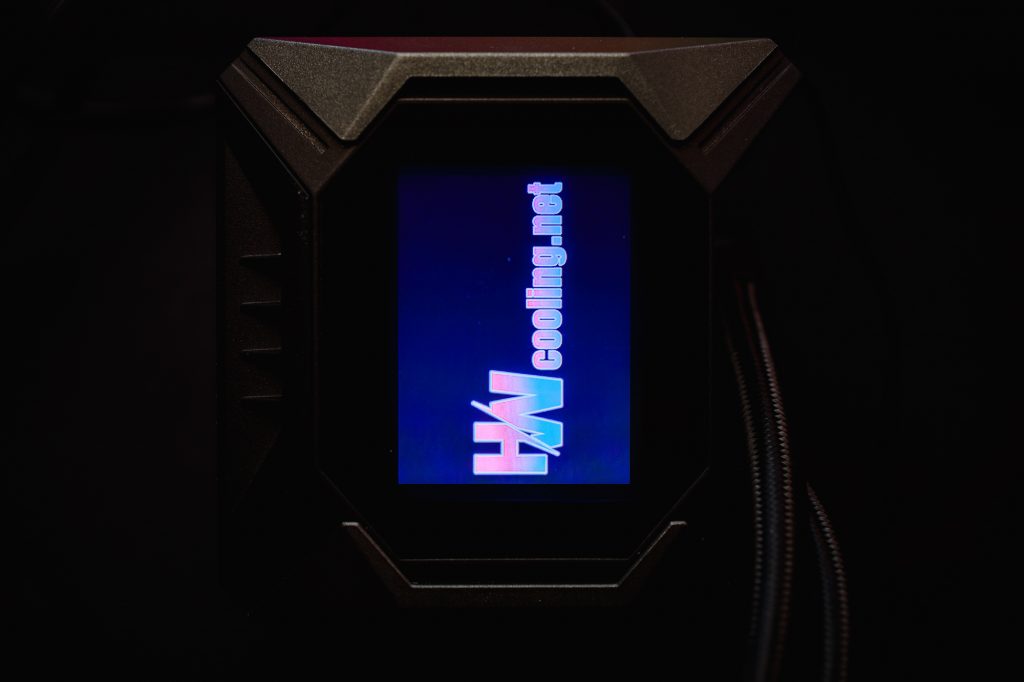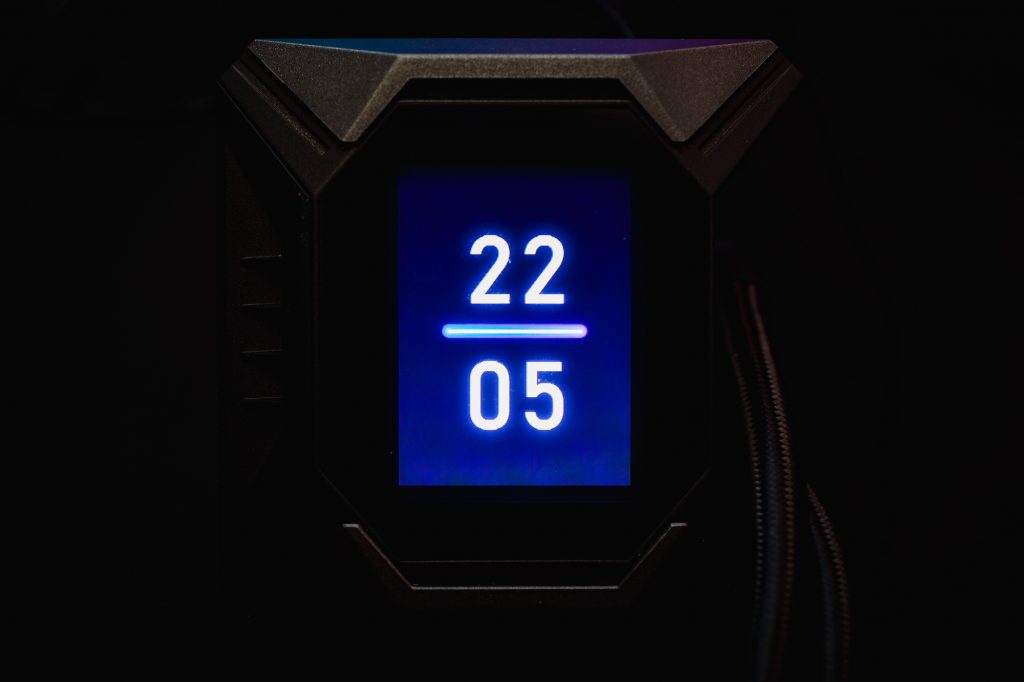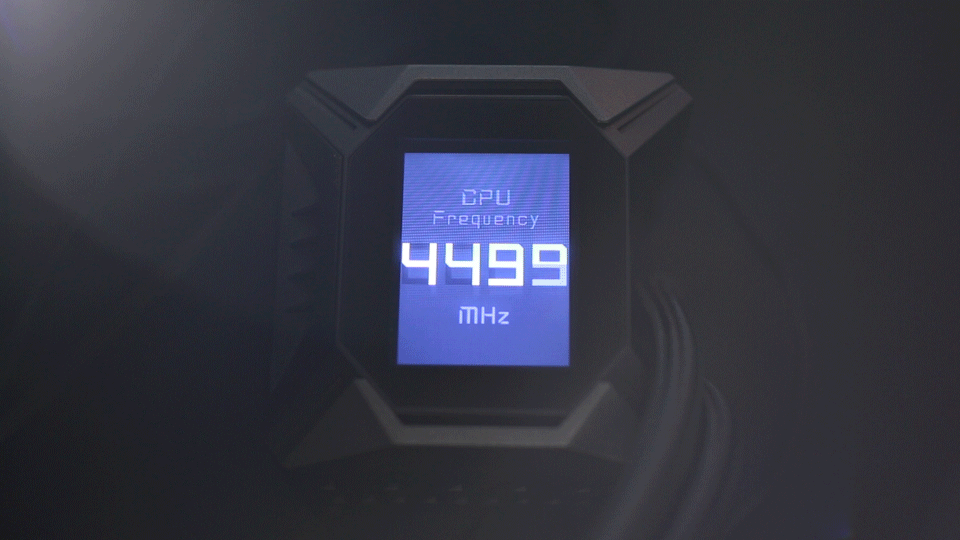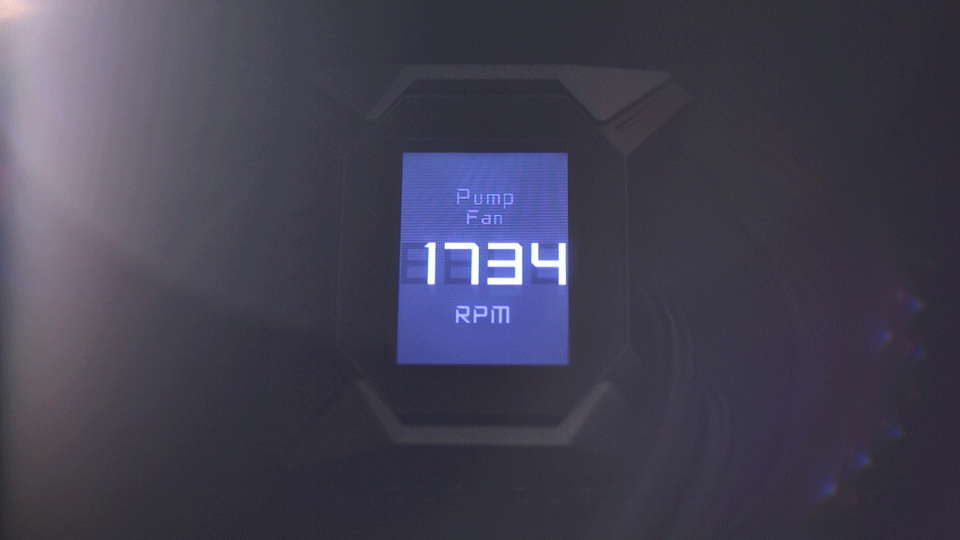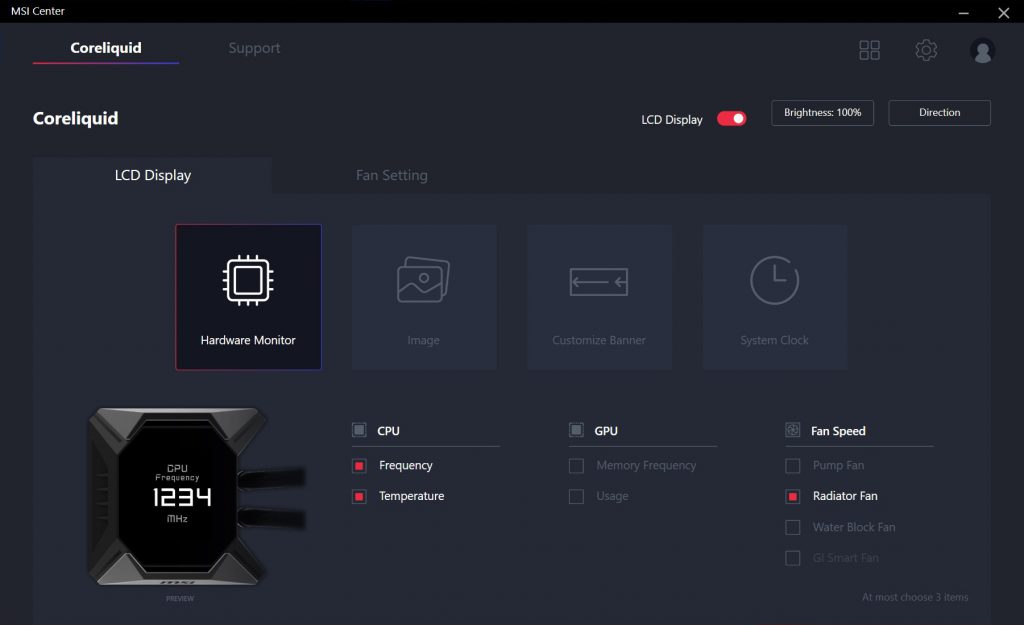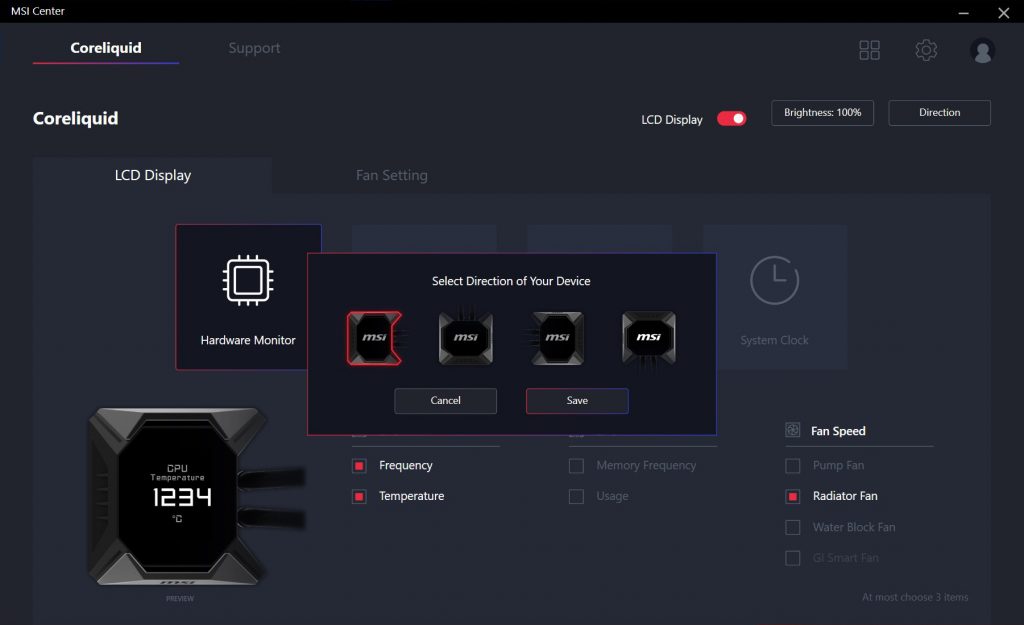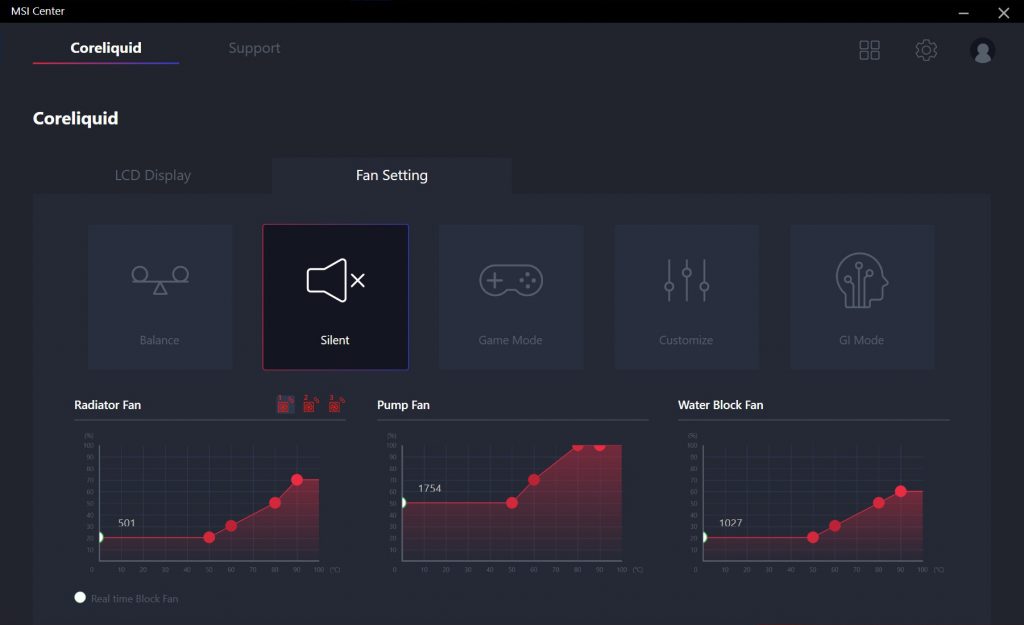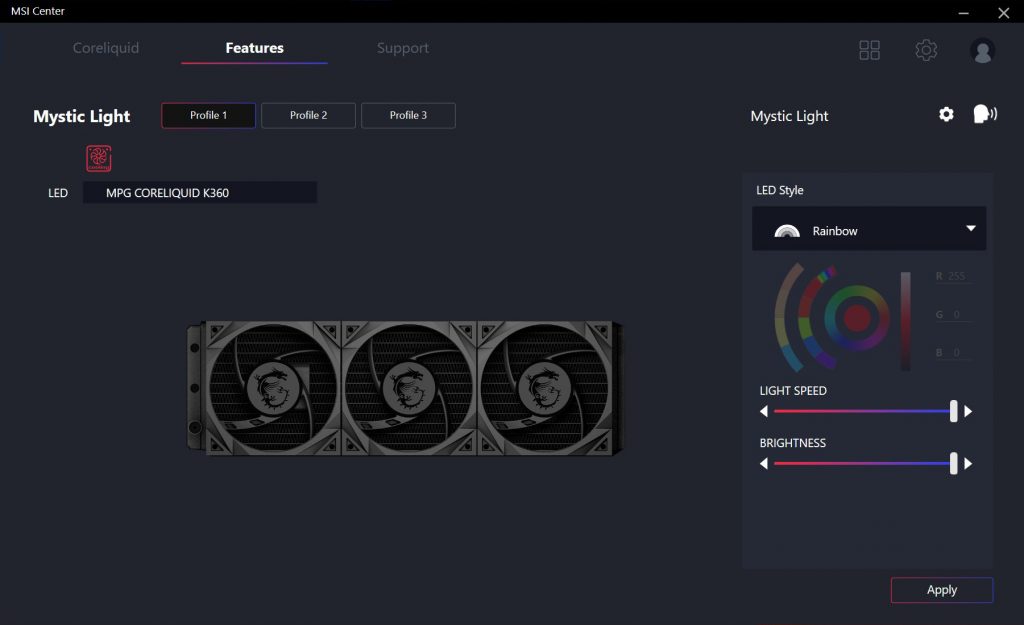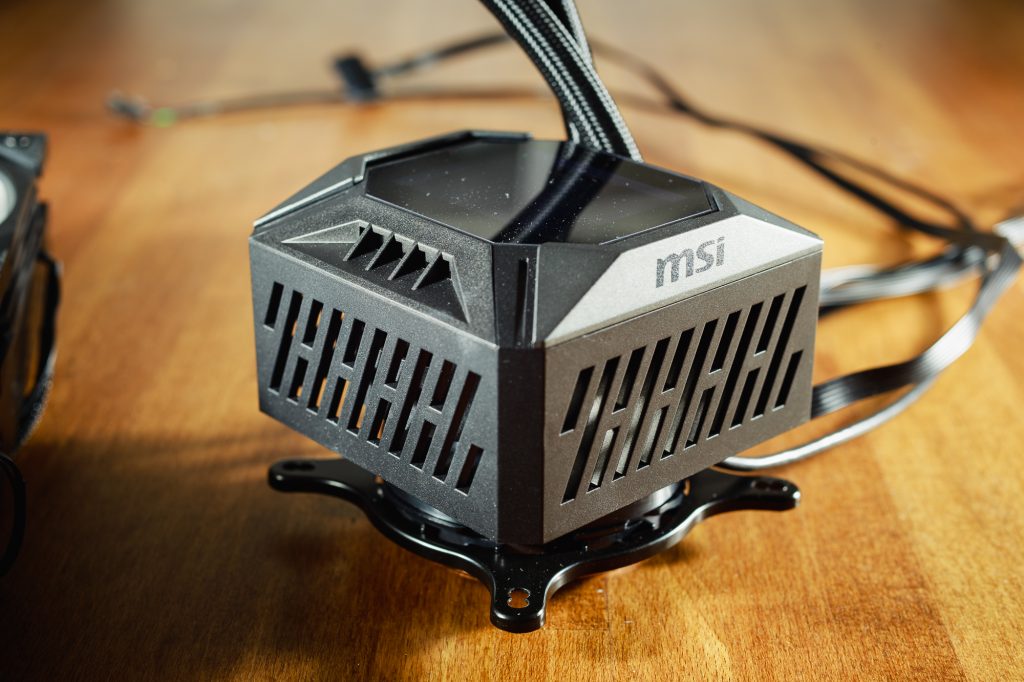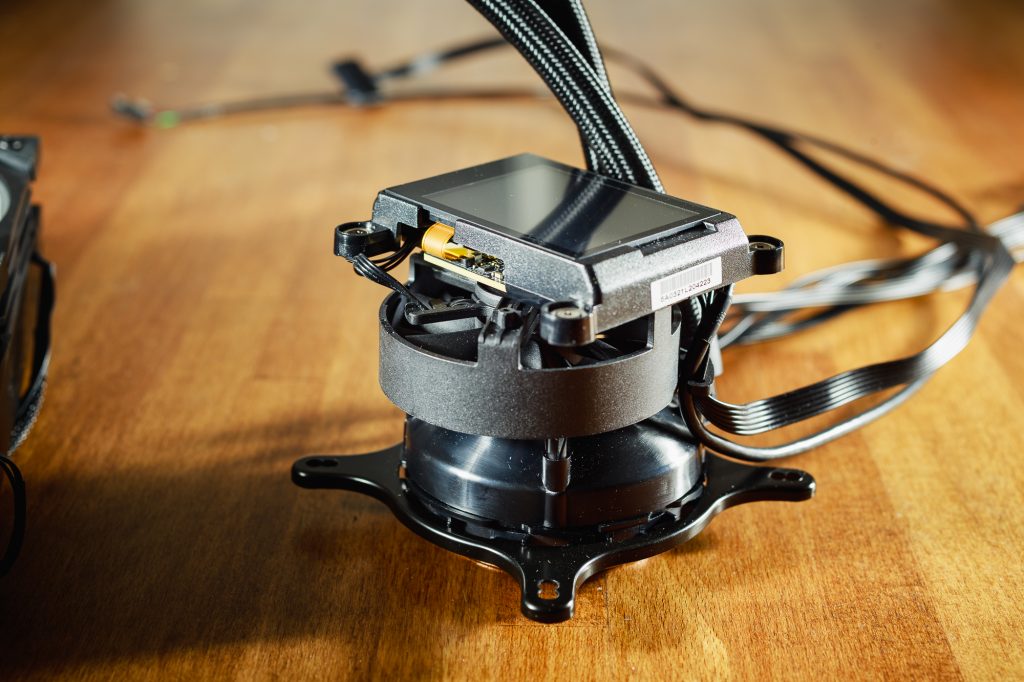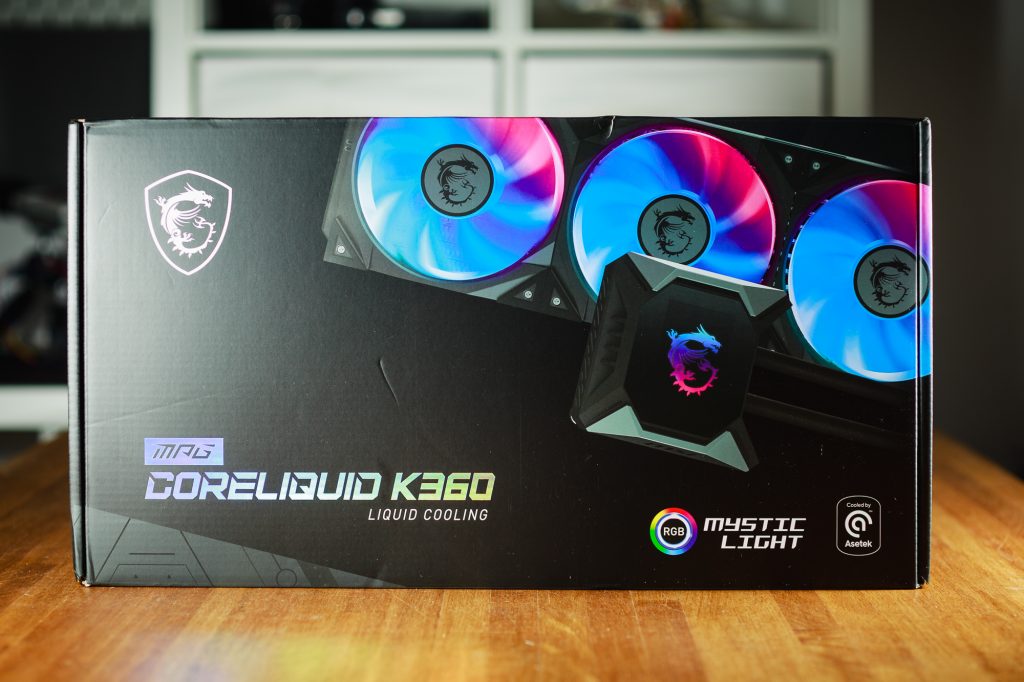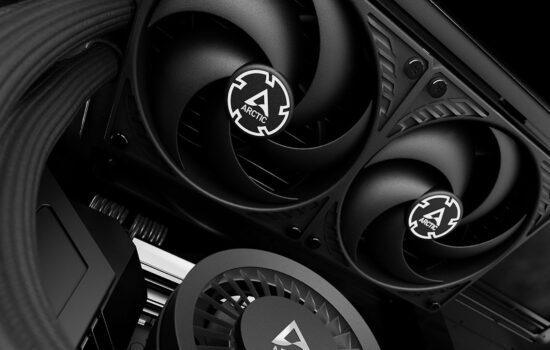Key features
The MPG Coreliquid K360 is the imaginary flagship among MSI’s coolers. Its interesting features include, for example, a fully customizable LCD display or a hidden fan for cooling the surroundings of the processor socket. Nowadays, of course, ARGB fan backlighting cannot be missing. But can this cooler also defend its high price? Today’s review will give you answers to not only this question.
Key features of the cooler
The MSI MPG Coreliquid K360, like all AIO liquid coolers, uses a large radiator to exchange the processor’s waste heat with the ambient air. Unfortunately, the radiator used here is made of aluminum, which is a bit of a pity due to the high price of the cooler. A copper radiator would certainly provide a longer life to the entire cooler and also offer slightly more efficient cooling.
The hoses that connect the radiator to the cooling block are braided, reasonably flexible and 40 centimeters long in total. Therefore, you should not have a problem with placing the radiator in the front position, even with larger cases. The hoses are plugged to the cooling block with the pump by means of rotary adapters. This makes it easier to run them in the case so that they do not get in the way of other components in the rig.
The imaginary heart of the entire cooler is the Asetek pump of the 7th generation, promising quiet operation even with fast circulation of liquid in the loop. The base of the cooling block is made of copper and a thin layer of paste is applied here from the factory. Unfortunately, the package is surprisingly lacking another tube of thermal paste if, for example, you want to re-install the cooler or move it to another rig. So make sure you mount the cooler on the first try.
And you must have noticed that the whole cooling block is quite large. For comparison, I’m adding a photo of the block next to the AMD Wraith Prism, which is not much larger.
The explanation for this size is simple. There is a 60 mm MSI Torx 3.0 fan above the cooling block with the pump, which has the task of cooling the surroundings of the processor socket. There are typically passive heatsinks from the processor’s power phase design, and usually one of the M.2 SSD slots. Modern SSDs can become really hot, so cooling this area is more than desirable. In addition, there are not too many AIO liquid coolers on the market to offer anything like this.
Above this fan there is also an electronic brain of the whole cooler and also a 2.4″ display. However, this display is unfortunately just an ordinary LCD panel, viewing angles are not too great and the backlight is not very even. A high-quality OLED display would be much better. This display is used to display information about the temperature or clock speed of the processor, but you can also view the system time, enter any text or you can even upload your own image here.
Everything can be controlled using the MSI Center application, where you can adjust the fan and pump curves or change the backlight of fans. You can also adjust the display orientation. You simply have everything in one place.
The entire block with the pump, fan and display is protected by a perforated removable plastic cover. It is attached to the block with four magnets. When installing the cooler, you must remove it to access the mounting bracket and attach the cooler to the processor. However, the large number of cables that are run from this block cannot be overlooked either.
There are a total of seven cables. One SATA cable for power supply, one USB 2.0 cable for communication between the cooler and the MSI Center application, one ARGB cable for controlling the fan backlight, one cable for connecting the pump to the motherboard and a total of three other cables for connecting the fans. Add six more fan cables. Each fan has one PWM cable and another cable for ARGB backlighting. You have a total of thirteen cables together! The whole thing could be partially simplified by the fact that the PWM and ARGB cables would be equipped with two connectors at the end and could be connected in series. This would greatly facilitate the subsequent untying of the cabling.
The cooler accessories are surprisingly modest. Here you will find screws and frames for installing the cooler on all current processor sockets. The installation of the cooler itself is very quick and easy. However, you will also need a different frame for the AMD TR4/sTRX4 socket. You will find that in the processor package. However, the contact area of the cooler is small for the size of the Threadripper CPU family and cannot cover the entire processor, so the cooling efficiency will not be optimal.
The package also includes a set of screws including washers for mounting the cooler to the case. There is also a 3-port hub for ARGB fan backlighting. Unfortunately, as mentioned in the previous text, you will not find any tube of thermal paste in the package. Only a pre-applied layer at the base of the block is available. Due to the price of the cooler, the absence of an extra tube of paste is difficult to understand.
Specifications of the pump, radiator and fans
The block with the pump is really large. I have already stated why this is the case in the previous text. The radiator has a standard thickness and its width does not exceed the width of a conventional fan. However, the price of this cooler is really high and it enters the territory of basic sets for building closed-loop systems.
| MSI MPG Coreliquid K360 | MSI MPG Coreliquid K360 | MSI MPG Coreliquid K360 |
| MSI MPG Coreliquid K360 | MSI MPG Coreliquid K360 | MSI MPG Coreliquid K360 |
| Supported sockets | Supported sockets | Intel 115x, 1200, 20xx; AMD AM4, TR4/sTRX4 |
| Radiator dimensions (H × W × T) | Fan dimensions (H × W × T) | 394 × 120 × 27 mm |
| Block dimensions (H × W × T) | Block dimensions (H × W × T) | 97 × 83 × 94 mm |
| Hose length | Hose length | 400 mm |
| Pump speed | Pump speed | 2,800 rpm |
| Pump LCD display size | Pump LCD display size | 2.4" |
| Radiator material | Radiator material | aluminum |
| Max RAM height | Max RAM height | no restrictions |
| MSRP | MSRP | € 255 |
Three MSI Torx 4.0 fans are supplied with the cooler. Their paper specs are respectable, but I especially take the value of the maximum static pressure here with a grain of salt. Due to the design of the fan, this value does not seem very real to me. However, the speed range is very wide. At low loads, you can make use of the 0 dB mode to cool the processor passively, and at high loads, you can use the 2.5k rpm for maximum cooling potential. At such high speeds, however, you must naturally take into account the high noise.
| Fan MSI Torx 4.0 | Fan MSI Torx 4.0 | Fan MSI Torx 4.0 |
| Fan MSI Torx 4.0 | Fan MSI Torx 4.0 | Fan MSI Torx 4.0 |
| Bearing | Bearing | double-row design |
| Max speed | Max speed | 2,500 rpm |
| Max static pressure | Max static pressure | 4.29 mm H2O |
| Max airflow | Max air flow | 131.5 m3/hour |
| Noise level | Noise level | 39.9 dBA |
- Contents
- Key features
- Measurement methodology
- Results – max rpm
- Results – medium rpm
- Results – low rpm
- Results – temperature and noise dependence
- Conclusion and summary





